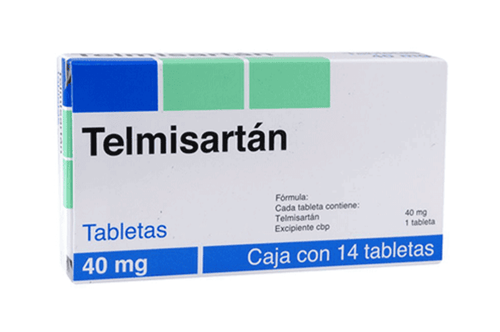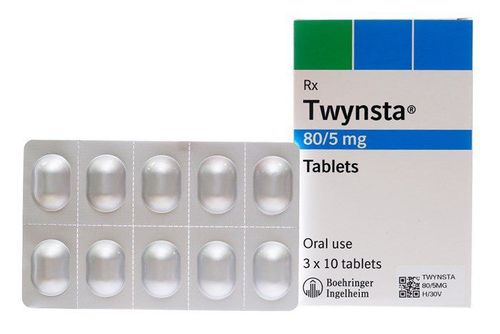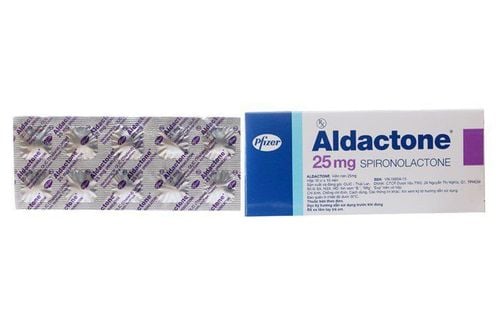This is an automatically translated article.
Spifuca Plus has 2 main active ingredients: Spironolactone and Furosemide. Spifuca Plus is to be used under the guidance of a physician. The following article provides you with information about the uses, dosage and precautions when using Spifuca Plus.
1. What is Spifuca Plus?
Spifuca Plus has two main active ingredients: Spironolacton 50mg and Furosemid 20mg. Spifuca Plus is available in the form of film-coated tablets.
Active ingredient Spironolactone Spironolactone is a mineralocorticoid antagonist that acts through competitive inhibition with aldosterone and other mineralocorticolds. Spironolactone acts primarily in the distal convoluted tubule, resulting in increased sodium and water excretion. Spironolactone reduces the excretion of potassium, ammonium NH4+ and H+. Spironolactone exerts diuretic and antihypertensive effects through this mechanism. Spironolacton drug starts to work relatively slowly, after 2 or 3 days of taking the drug to reach the maximum effect, Spironolacton decreases slowly in 2-3 days when stopping taking the drug. Therefore, Spironolactone should not be used when rapid diuresis is required. When spironolactone is used concurrently with thiazide diuretics and loop diuretics, the effect of magnesium and potassium excretion will be reduced.
Spironolactone and its major metabolites are 7 alpha-thiomethyl-spironolactone and canrenon, both of which have anti-mineralocorticoid effects. Spironolactone has been shown to reduce both systolic and diastolic blood pressure, with maximal antihypertensive effects usually achieved after 2 weeks of treatment. Spironolactone is a competitive aldosterone antagonist, the dose of which is adjusted according to the individual patient's response to therapy.
Primary hyperaldosteronism is rare. Secondary hyperaldosteronism occurs in edema secondary to nephrotic syndrome, cirrhosis, and persistent congestive heart failure and after treatment with conventional diuretics. The diuretic effect of Spironolactone is enhanced when used in combination with conventional diuretics. Spironolactone does not cause hyperuricemia or hyperglycaemia, as occurs with high-dose thiazide diuretics.
Active ingredient Furosemide Furosemide is a sulfonamide-derivative diuretic that is fast acting, strong and dose dependent. Furosemide acts on the ascending limb of the loop of Henle, so it is classified as a loop diuretic. The main mechanism of action of Furosemide is inhibition of the Na+, K+, and Cl- co-transport systems in the ascending loop of Henle. Furosemide increases the elimination of these electrolytes with an increase in water excretion. The drug also increases the excretion of Ca2+ and Mg2+. The diuretic effect of furosemide is strong, so it also has an antihypertensive effect, but is usually weak. In patients with pulmonary edema, furosemide causes an increase in venous volume, reducing left ventricular preload before the diuretic effect becomes apparent.
2. Indications and contraindications of the drug Spifuca Plus
Spifuca Plus is indicated in the treatment of the following conditions:
Congestive heart failure. Essential hypertension. Cirrhosis . Edema due to cirrhosis and congestive heart failure. Treatment of edema secondary to hyperaldosteronism. Treatment of edema resistant to other diuretics used. The use of Spifuca Plus is contraindicated in the following cases:
Allergy or hypersensitivity to Spironolactone, Furosemide or any excipients of the drug Spifuca Plus, with sulfo-namamide derivatives such as sulfonamides to treat diabetes . Acute renal failure, severe renal failure, anuria. Renal failure or anuria due to drugs that are toxic to the liver or kidneys. Hyperkalemia. Hepatic coma, hepatic coma. Pregnant and lactating women.
3. How to take Spifuca Plus
Spifuca Plus is used orally, under the guidance of a doctor.
Dosage of Spifuca Plus in adults:
Diuretic when edema is resistant to treatment due to nephrotic syndrome, cirrhosis, congestive heart failure, especially in patients with suspected hyperaldosteronism: Initial dose 1 - 4 tablets/ daily, divided dose into 2-4 times/day, take the drug for at least 5 days. Maintenance dose 2-8 tablets/day, divided dose into 2-4 times/day. Hypertension: Initial dose 1-2 tablets/day, divided dose into 2-4 times, use the drug for at least 2 weeks. The maintenance dose is adjusted on a patient-by-patient basis. Dosage of Spifuca Plus in children:
Diuretics or treatment of hypertension, ascites due to cirrhosis: the starting dose is 1-3mg/kg/day administered once or divided into 2-4 times. The dose is adjusted after 5 days of dosing.
4. Spifuca drug overdose and how to handle it
Spironolacton overdose:
Symptoms of Spironolacton overdose include anxiety, confusion, shortness of breath, muscle weakness. Treatment for overdose includes gastric lavage or activated charcoal. Electrolyte balance and renal function should be checked. Treatment is mainly symptomatic and supportive. If hyperkalemia has changes on the electrocardiogram: intravenous sodium bicarbonate, calcium gluconate; Give the patient an ion exchange resin (sodium polystyrene sulfonate) to capture potassium ions, which helps to lower blood potassium levels. Furosemide overdose:
Symptoms of Furosemide overdose: water and electrolyte imbalance, headache, cramps, muscle weakness, thirst, loss of appetite, low blood pressure, rapid pulse. Treatment of overdose Furosemide: replace lost water and electrolytes.
5. Undesirable effects when using Spifuca Plus drug
Related to Spironolacton:
Common
Whole body: fatigue, headache, somnolence, impotence. Endocrine: increased prolactin, gynecomastia, lactation, menstrual disorders, bleeding after menopause. Gastrointestinal: diarrhea, nausea. Uncommon:
Skin: rash, erythema, urticaria. Metabolism: hyperkalemia, hyponatremia. Nervous: cramps, muscle spasms, paresthesias. Urinary: increased serum creatinine. Related to Furosemide:
Rewards encountered:
Circulatory: decrease in blood volume when used in high doses, orthostatic hypotension. Metabolic: decreased potassium, decreased sodium, decreased magnesium, decreased calcium, increased uric acid, alkalosis due to low Cl-. Uncommon:
Gastrointestinal disturbances, nausea, vomiting. Rare:
Blood: leukopenia, thrombocytopenia. Skin: rash, paresthesia, vasculitis. Metabolism: increased blood glucose, urinary glucose. Ear: tinnitus, reversible hearing loss. If you experience any unwanted effects while taking Spifuca Plus, please inform your doctor for timely treatment.
6. Some notes when using Spifuca Plus medicine
Patients with impaired renal function when spironolactone is combined with other common diuretics are at risk of hyperkalemia. Reversible hyperchloremic metabolic acidosis (often accompanied by hyperkalemia) has occurred with the use of spironolactone in patients with decompensated cirrhosis despite normal renal function. Furosemide should be used with caution in patients with prostatic hypertrophy or dysuria as the drug may precipitate acute urinary retention. Ability to drive and use machines: Spifuca Plus may cause drowsiness. Do not drive or operate machinery when experiencing this side effect while taking this medicine. Pregnant and lactating women: Do not use Spifuca Plus in this population.
7. Drug interactions
Concomitant use of Spironolactone with an ACE inhibitor may result in severe, life-threatening "hyperkalemia", particularly in patients with renal failure. The anticoagulant effect of coumarin, indandion derivative and heparin is reduced when co-administered with spironolactone. Furosemide enhances the anticoagulant effect of anticoagulants. Nonsteroidal anti-inflammatory drugs, especially Indomethacin, reduce the antihypertensive effect of Spironolactone. Nonsteroidal anti-inflammatory drugs reduce the diuretic effect of furosemide. Lithium: Concomitant use of Spironolactone and Lithium may lead to lithium toxicity due to decreased clearance of the drug. Furosemide increases blood levels of lithium, which can be toxic. Drugs containing potassium: use with Spironolactone increases blood potassium. Digoxin and cardiac glycosides: The biological half-life of these drugs may be increased when administered with spironolactone. Cephalothin, cephaloridine: Concomitant use with Furosemide may increase nephrotoxicity Aminoglycoside: when using Furosemide with this drug increases ototoxicity and nephrotoxicity. Corticosteroids: increase K+ excretion when used with furosemide. Antidiabetic drugs: Furosemide can cause hyperglycemia. It is necessary to monitor and adjust the dose of antidiabetic drugs. Cisplatin used concomitantly with furosemide increases ototoxicity. Antihypertensive drugs in combination with furosemide increase the antihypertensive effect, need to adjust the dose when used in combination. Especially when combining Furosemide with angiotensin converting enzyme inhibitors, blood pressure can be severely reduced. Above is some information about Spifuca Plus that readers can refer to. If you have any questions about the dose or use of the drug, you need to contact a specialist for the best advice.
Please dial HOTLINE for more information or register for an appointment HERE. Download MyVinmec app to make appointments faster and to manage your bookings easily.













